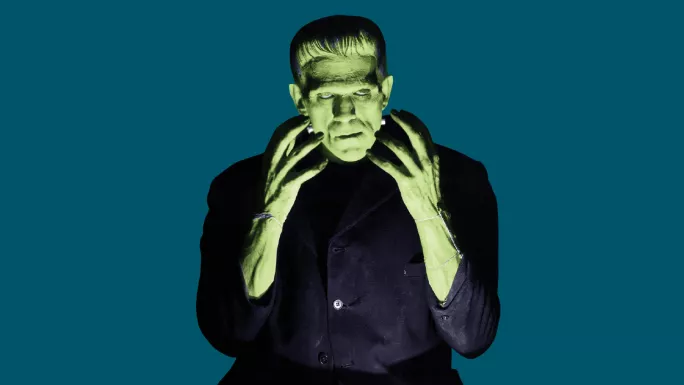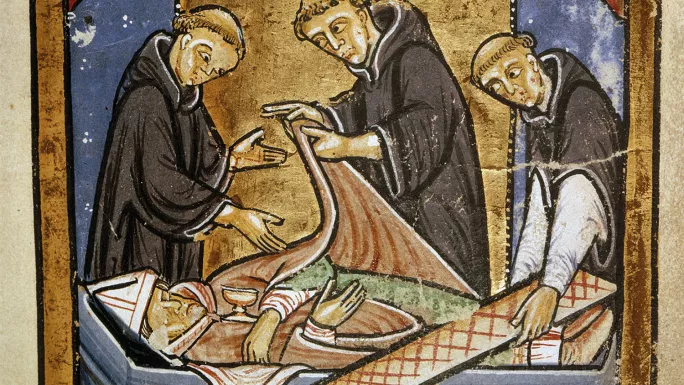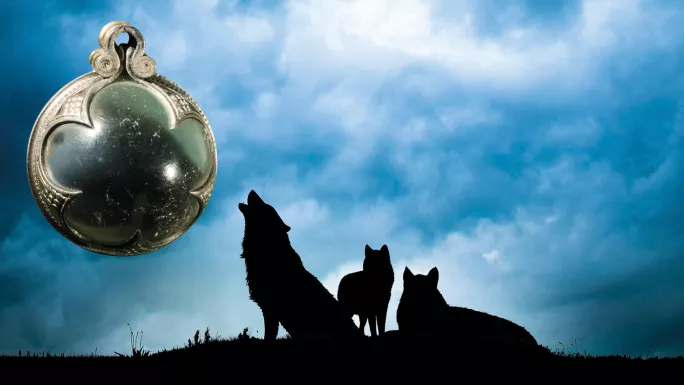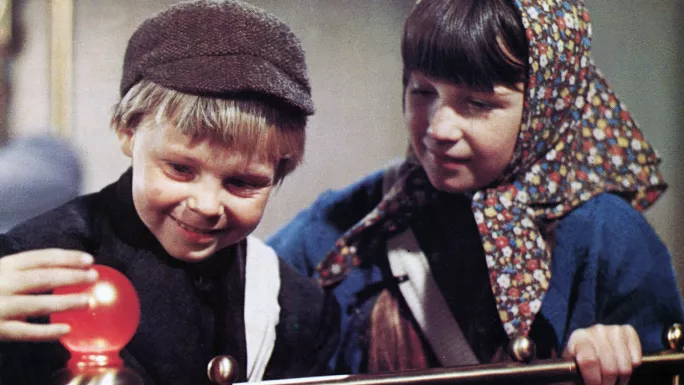- Home
- Long Read: Why it’s time to form a new literary canon for KS3
Long Read: Why it’s time to form a new literary canon for KS3

If you have desperately foraged for texts in the stock cupboard of an English secondary school in search of something - anything - suitable for a jaded Year 8 class, then you will know my pain.
You will have been through a lengthy list of book titles with your classes and you will have been greeted with a weary “we’ve done it” every time you uttered a name.
You will then have frantically cast your eyes over the uneven stacks of books in the cupboard. And you will have become increasingly frustrated.
The old favourites were all there: Holes, of course, but they did that in Year 7 and Year 6 (and possibly Year 5 as well). They were pretty sure they had read Northern Lights in Year 6, although they couldn’t remember who Roger was. And it will have emerged, after intense questioning, that the eager Schools Direct trainee had led them through a baffling but exhilarating Marxist reading of Carrie’s War last term.
Finally, having almost given up hope, you will have spotted your long-lost Sherlock mug atop a teetering stack of Flowers for Algernon. Your sudden cry of recognition will have unbalanced the books and as they toppled on to your head, the impact will have offered you a moment of clarity: there’s not a wide enough range of texts taught at key stage 3.
Even if your journey to that moment of recognition did not mimic my own (but we all have Sherlock mugs, right?), we all know the truth of that statement, whether we are English teachers in a secondary school or not. Primary teachers know it. Every other secondary teacher knows it.

The criteria for selecting texts in English departments has always been problematic. For years, gritty teen-based fiction was all the rage and after a particularly grim term teaching Stone Cold, Z for Zachariah and The Chocolate War, I could have been forgiven for thinking that the measure of a book’s worth for study (apart from being written by a bloke called Robert) was not having even the faintest glimmer of humour.
Then we were advised that unless a book had a sympathetic male protagonist, disengaged boys would run amok.
There also couldn’t be too much sex and only a controlled amount of violence - the odd “bloody” and the occasional “bugger” might have been permitted, but a tumult of swear words ruled a book out of the running. No one wants to be that Daily Mail headline.
Crucially, any book that made it through those specifications also had to be short enough to squeeze into a half-term scheme of work. And, although nobody likes to admit it when they’re competing to be the most rigorous teacher on EduTwitter, it was useful if there was a film version for when morale was low, too.
I’m not sure when or by whom all these rules were formulated, but knowing this would certainly clear up the mystery of why, for a brief period, The Woman in Black appeared on the GCSE syllabus.
Restrictions and expectations
If that wasn’t enough to narrow our options in KS3, over the past few years standards at KS2 have risen, along with the expectations of what 10-year-olds might be able to read and understand. Back when I started teaching, The Machine Gunners was considered to be a Year 9 staple. Now it’s taught in Year 6.
So what, under all these restrictions, have we being doing in KS3 when it comes to text selection?
Some empty spaces have been filled by redundant GCSE texts like Of Mice and Men (post-Gove, they’re sitting gathering dust in the cupboard anyway…), regardless of whether Year 8 are ready for Curley’s “glove fulla Vaseline” or not.
Another option has been to go straight to classic adult fiction. Oliver Twist is a favourite because although the violence is memorably brutal, the sex and the children trafficked into prostitution are heavily coded. The first part of Jane Eyre also goes down well and Frankenstein is inevitably smuggled in under the cover of “Gothic fiction”.
But there’s a tricky line to tread. Certainly, students should be challenged and, yes, pre-20th-century texts must be introduced, but too much, too early can be off-putting. Frankenstein - for all its genius - is a great idea wrapped up in a fairly impenetrable 19th-century novel; Jane Eyre is tremendous but it’s hard-going in places and might best be left to older readers who will appreciate it all the more for not having been dragged through it at the age of 12 (and I speak here from bitter experience).

Ultimately, KS3 needs a text rethink.
I don’t blame teachers for this situation. We’re all overloaded, and it’s easy to fall back on what we know; to work through those tried-and-tested schemes of work and allow the book to fall open on chapter three of Holes, where Stanley Yelnats’ great-great-grandad steals the pig.
But now that we’re more confident with the new GCSE spec (we are, aren’t we?), this could be our chance to invest some time in developing subject knowledge.
Of the many ways we can do this, I would like to propose one that may be overlooked: perhaps we could delve into the past and rediscover some of the neglected classics, written for children but in a less familiar time and in language that’s more challenging.
To be honest, we don’t even have to delve that far back. There’s some absolutely corking children’s fiction from the 1960s and ’70s. If you have forgotten that there was life before Harry Potter or you are too young to have been a member of the Puffin Club, do not fear: I’ve put together a few author suggestions for your consideration.
1. Robert Louis Stevenson
RLS is always good value, although I need to sound a note of caution.
Treasure Island and Kidnapped both open with rollicking action and iconic characters. Who can forget Blind Pew tapping his way towards the Admiral Benbow? And Uncle Ebenezer’s bid to murder Davy by forcing him to climb the derelict tower in a thunderstorm, read aloud in thrilling tones, will silence even the most wayward Year 7 crowd last lesson before lunch.
But Stevenson’s stories have an unfortunate habit of petering out. Jim Hawkins makes it home to tell the tale and Davy Balfour is restored to health and his rightful property, but two-thirds of the way through both novels there are some lengthy and indistinguishable passages in which the plucky young heroes hide from their pursuers - in tropical foliage and dense heather respectively - and not much else happens.
Still, this is no reason to forgo the delights of Stevenson’s glorious prose. Judicious planning can overcome the problems with pace, allowing you to zip through to the good bit with Ben Gunn.
2. E Nesbit
Nesbit is known for her magic realism: Five Children and It and The Phoenix and the Carpet, but she also does family drama well. The Story of the Treasure Seekers illustrates both the pleasures and the pitfalls of teaching 19th-century children’s fiction.
One of the joys is Nesbit’s narrator, 12-year-old Oswald Bastable. “It is one of us that tells this story,” he announces on the very first page, “but I shall not tell you which: only at the very end perhaps I will. While the story is going on you may be trying to guess, only I bet you don’t.”
This most transparent of unreliable narrators gives himself away by lavishing himself with such praise - one chapter is entitled “The Nobleness of Oswald” - so that it’s impossible not to guess.
Like most of the protagonists in Nesbit’s novels, the Bastables are left to their own imaginative and sometimes dangerous devices. Brought up on the ripping yarns of Stevenson and Kipling - Oswald occasionally slips into the elevated language of his literary heroes - each child in the family (there are six) creates a plan to restore the fortunes of the fallen house of Bastable.
While I hesitate to suggest that reading at KS3 should be all about paving the way for GCSE literature, books like The Story of the Treasure Seekers provide useful context for later areas of study. The desperate need for a middle-class family to remain “respectable” and the realities of life before the NHS and free education are laid bare here.
There are, however, prickles of discomfort for the modern reader: the middle-class children at the centre of the story behave shockingly badly. They kidnap and tie up the little boy next door and they set their dog on an elderly man in a staged rescue bid. In one chapter, Nesbit features a money lender in a fashion that’s unmistakably anti-Semitic, while the saviour of the family fortunes is their “Indian Uncle”, a bluff old racist who’s grown rich under the Raj.
Rather than sidestepping these attitudes, if you plan carefully with the aim of addressing some of the more problematic issues in the text head-on, it can provide some valuable lessons in context.
3. Richmal Crompton
Richmal Crompton’s Just William stories are self-contained and they are useful for teaching the complexities of comic writing and irony.
Originally written for adults, they became wildly popular with children. Throughout the 1920s, ’30s and ’40s, Crompton published a collection of short stories starring anarchic anti-hero William Brown every year. After that and until her death in 1969, her output slowed to a volume every other year, so there’s plenty to choose from.
My personal favourite is William’s Double Life, in which William disguises himself as his own fictional twin in order to get himself out of trouble.
The language that Crompton uses is uncompromisingly complex. She creates a delicate balance between condescension and collaboration, inviting her reader to laugh with and at William, his swaggering self-belief, his ridiculous schemes and his eloquent indignation.
Above all, the William stories are funny: proper laugh out loud, think of it again on the bus home and laugh out loud again funny. William did not translate well to the screen, so don’t bother searching YouTube if you’re having one of those days. However, Martin Jarvis’ audio version is an education in the delivery of laconic wit and brings Crompton’s writing to elegant, ironic life.
4. Robert Westall
OK. So The Machine Gunners is off the table. Key stage 2 are welcome to it - although, seriously folks, at least leave Macbeth for us - but, like many stalwarts of 1970s children’s fiction, Westall is more than a one-trick pony.
The Wind Eye, set on the Farne Islands, is a genuinely chilling time-travel story in which a dysfunctional family encounter the mysterious power of St Cuthbert. Westall writes about family loyalty, faith, belief and the splendour of Durham Cathedral while maintaining a gripping narrative.
The Wind Eye is, in my opinion, a better piece of writing than The Machine Gunners and it has the bonus of being without the casual misogyny. In fact, I’d go further than that and suggest that Beth, Westall’s sensitive heroine, is a brilliantly understated portrait of a teenage girl in turmoil.
Time travel is a theme that runs through Westall’s work and another novel, The Devil on the Road - sadly out of print - takes his biker hero back to the 17th century, where he becomes embroiled with the “Witchfinder General”, Matthew Hopkins.
If all you know of Westall is The Machine Gunners, he’s worth another look. And if your department still adheres to its strict “Robert-only” policy, he’ll tick that box, too.

I’m breaking off here to reiterate a point: these are just suggestions. One of the most adorable quirks of English teachers is that they all have deeply held views on what constitutes decent literature. I’m sure that for every one of you who, right now, is excitedly googling the mysterious words “Puffin Club”, there will be two deriding my poor taste and lack of judgement.
This is my own imaginary KS3 stock cupboard. You may not agree with my choices, but teaching a book you know and love can rekindle some enthusiasm and inspire similar enthusiasm in the students in front of you. And then there’s the joy when the kids meet the challenge, get the universal truth and become wrapped up in the language and the stories and the characters.
With that in mind, it might be time to place that stack of Flowers for Algernon right at the back of the shelf - for emergencies only - and clear some space for something a little different.
My list continues...
5. Joan Aiken
If you’re looking for spirited young heroines and dark satanic melodrama, try The Wolves of Willoughby Chase. Sequels set in the fictional reign of Charles III, Black Hearts in Battersea and Nightbirds on Nantucket, have plots of Dickensian complexity and distinctive, dashing characters.
6. Antonia Barber
The Amazing Mr Blunden is a time-travelling ghost story with a visitor from the past who wishes to make amends.
7. Monica Dickens
Searching for a story about a home for unwanted horses and plucky kids left to their own devices? Follyfoot is more than a sentimental animal story. Dickens’ young heroes - in this and other novels - are pragmatic and down-to-earth.
8. Penelope Farmer
Charlotte Sometimes is a haunting time-travel story set in a boarding school during the First World War.
9. Leon Garfield
The Strange Affair of Adelaide Harris is a delightful comic mix-up set in Regency England. Garfield alludes to Stevenson in his pirate novels Jack Holborn and Black Jack, while Devil-in-the-Fog and Smith are set in 19th-century London and owe more than a nod to Dickens.

10. Alan Garner
Alan Garner’s The Weirdstone of Brisingamen combines fantasy and folklore. A later novel, Red Shift, is three intertwined love stories, set in different periods of time. Its themes of loneliness, despair and sexuality make it more suitable for a slightly older - Year 9? - reader.
11. Rosa Guy
Set in Harlem in the 1940s, Rosa Guy’s The Friends is a tale of cross-cultural friendship and loyalty.
12. Frances Hodgson Burnett
Written in 1911, The Secret Garden is a classic story of redemption and acceptance. Other works include Little Lord Fauntleroy - which, honestly, might be a stretch for modern readers - and her Edwardian Cinderella story, A Little Princess.
13. EL Konigsburg
From the Mixed-Up Files of Mrs Basil E. Frankweiler is told with snap and verve. Claudia and Jamie are siblings who run away from home. Hiding out in the Metropolitan Museum of Art in NYC, they become involved in an art-history mystery. Other novels by Konigsburg include Jennifer, Hecate, Macbeth, William McKinley and Me, Elizabeth - about a girl in modern suburbia who becomes an apprentice to a witch - and A Proud Taste for Scarlet and Miniver, which is set in Heaven where Eleanor of Aquitaine is waiting for Henry II to join her from Purgatory. Yes, that’s right. You heard.
14. Ursula K Le Guin
A Wizard of Earthsea is a magical coming-of-age story in which a young wizard with a scarred face learns to harness his magical powers when he is sent to a school for wizards. I’m saying nothing …
15. Astrid Lindgren
Translated from Swedish, The Brothers Lionheart is a fantasy novel about life, death and the afterlife. Warning: it’s heartbreaking.
16. John Masefield
Poet Laureate John Masefield also turned his hand to children’s fiction: The Midnight Folk and The Box of Delights are thrilling tales of magic, adventure and witchcraft.

17. Mary Norton
You may well know Norton’s classic The Borrowers, a book that was hijacked by Hollywood and made into a comedy caper. The novel is about Arrietty’s coming-of-age and awareness of another, larger world around her. I’d recommend another Norton classic, Bedknob and Broomstick (note the singular) - a far more interesting novel about danger and responsibility than the Mary Poppins-ised film version suggests. However, there’s an unfortunate chapter representing South Sea islanders as cannibals that needs to be challenged.
18. Bill Naughton
Famous for 1960s theatrical dramas Spring and Port Wine and Alfie, Bill Naughton also wrote a collection of short stories for children, The Goalkeeper’s Revenge. Set in the days of his childhood in 1920s Bolton, the stories are funny, authentic and moving.
19. Rosemary Sutcliff
The Eagle of the Ninth is set in the hinterlands beyond Hadrian’s Wall, where a young Roman officer, Marcus Flavius Aquila, accompanied by his slave, Esca, goes in search of his father’s lost legion.
20. Mildred D Taylor
One in a series of novels featuring the Logan family, Roll of Thunder, Hear My Cry is a powerful, riveting read. The story deals with the family’s fight to keep their land and their struggle against the racism and violence of 1930s Mississippi.
21. Alison Uttley
A Traveller in Time takes its young heroine, Penelope, back to the days of the doomed Babington Plot to assassinate Elizabeth I. With Penelope caught between one world and another and smitten with the gallant Anthony Babington - but powerless to stop the inevitable - it’s a layered story about the journey into the world of adulthood. Mary Queen of Scots makes a fleeting, glamorous appearance.
22. TH White
Based on Sir Thomas Malory’s Le Morte d’Arthur and the first in White’s tetralogy The Once and Future King, The Sword in the Stone tells of young Arthur’s childhood and his meeting with Merlyn. Direct and funny, Merlyn educates Arthur by morphing him into a fish, a bird, a badger and an ant - and introduces him to Robin Hood.
23. Diana Wynne Jones
A prolific writer of children’s fiction - you may know Howl’s Moving Castle - Wynne Jones’ books include The Ogre Downstairs, which offers magic realism in a dysfunctional domestic setting. Step-siblings find common ground when their despotic (step-)father buys them each a chemistry set that possesses mysterious powers.
Sarah Ledger is director of learning for Year 9 at William Howard School in Brampton, Cumbria and has been teaching English for 30 years. She tweets @sezl
Keep reading for just £1 per month
You've reached your limit of free articles this month. Subscribe for £1 per month for three months and get:
- Unlimited access to all Tes magazine content
- Exclusive subscriber-only stories
- Award-winning email newsletters



